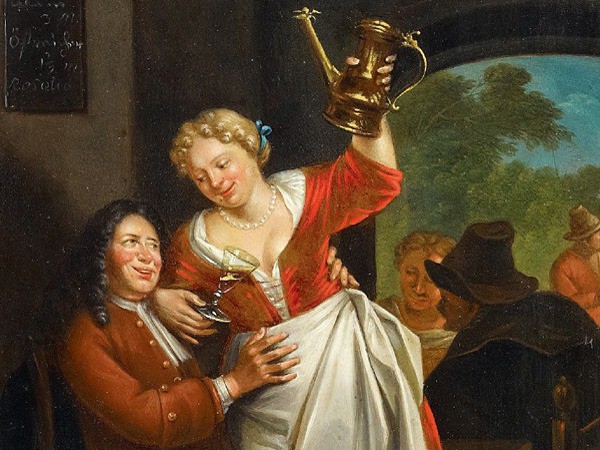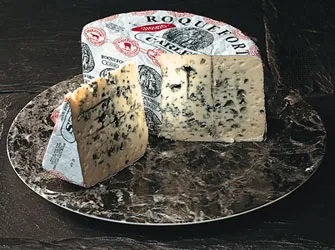How to taste wine like a real professional
The best advice I ever got when I asked the question; “How do I learn how to taste wine” was from a sommelier in France in the early ’90s when he said; “you learn how to taste wine at home!”
Step one; Looking at the color of the wine
The first step in tasting a wine happens before you taste the wine. When the wine is first poured into your glass, before swirling it, smelling it, or sipping it, take a good look at it. The reason you look at the wine is to get a sense of its color, as a wine’s color can tell you a lot about the wine you’ll be tasting. When doing this, many people like to hold their glass of wine against a white background, as that helps you see the hue of the color more easily.
So why do we care about color? A wine’s color can tell you a lot about the wine you’ll be drinking. The first thing to remember is that the color of a wine comes from contact with the grape skins after the grapes have been juiced. The longer the wine comes into contact with those skins, the more those skins will impart their color to the wine. Because the grape skins have a lot of characteristics, just like the zest of an orange has a purer orange flavor, or an apple skin contains more fiber than the meat, the longer the skin of a grape is in contact with the wine, the more of its characteristics it imparts. On top of this, oak can also help make colors lighter or darker, so understanding color, especially for white wines, can help people who don’t like oaky white wines to avoid them.
First look at the shade of yellow. Is the yellow very light and bright, approaching clear, or is the yellow deep and full, almost approaching the color of straw? New Zealand Sauvignon Blancs are famous for being light and bright white wines. The light-colored wines have had minimal contact with the grape skins and are usually crisp and refreshing. Typically, these wines have not been aged in an oak barrel.
If the wine is darker and deeper in yellow, then this is usually a good sign that the wine was aged in an oak barrel. It will have a smoother taste and will be much fuller and richer.
The same steps are followed when examining a red wine as with white wine. Start by looking at the shade of red wine in your glass. If the wine is light red, even approaching pink, it should taste light and bright. It may even be a little tart or “fresh” tasting and that is because the lighter the red of a wine, the less likely that it was ever aged in oak, and oak is what helps round and a mellow glass of wine.
As the hue of the red wine gets darker and darker, approaching the colors of maroon and purple, the red will become much bolder and richer.
Step two; Swirling your wine
Once you’ve looked at the wine in your glass and determined what the color means, the next step in tasting is to swirl and agitate the wine.
Everyone has their unique technique for swirling wine, and that’s fine. Some people leave the bottom of the wine glass firmly planted on the table and just make a few circles with the base, while others like to pick the wine glass up and slightly flick their wrist, thereby making little circles in the air. Finally, others like to be extremely showy with their swirling, making grandiose motions as though they’re conducting a symphony orchestra (we highly recommend that you leave the showy swirling for the professional tasters).
The object of swirling is to get more oxygen into your wine. Oxygen is great for wine because as soon as a wine encounters oxygen, it begins to break down, which most people refer to as a wine “opening up.” As the wine opens, it gives off its aromas and also softens, which is good. On the other hand, if you let a wine sit in a glass exposed to oxygen for too long, say overnight, the oxygen will fully oxidize the wine, ruining it and leaving it with an unpleasant taste that can be flat and even bitter.
Step three; Smelling the wine
Now that you’ve looked at the wine and swirled it around in your glass, there’s only one more step before you get to drink it: smelling the wine.
When you smell a wine, you’re preparing your brain for the wine you’re about to taste. Our sense of smell has a profound effect on the way our brain processes flavor.
When you go to smell a wine, put your nose deep into the glass and close your eyes… then breathe in deeply through your nose. As you smell the wine, think about what scents you’re picking up, and keep in mind that there are no wrong answers. If it’s a white wine, perhaps you smell bananas, lemon rind, pineapple, or even that scent that is always in the air when you go to the beach. If it’s a red wine, you might smell prunes, cherries, strawberries, peppers, plums, or tobacco. In both situations, you might say you just smell grapes, and that is fine too. Your brain can only pick up scents that are in your memory, meaning they are scents you’ve smelled before or smell often. That’s why ten people could be sitting around a table smelling the same wine and say they smell ten different things!
Now that we’ve given our brain some material to ready our taste buds, we want to determine if we’re picking up any scents that could signal that something could be wrong with the wine, such as the wine being corked. A corked wine is not pleasant to drink, so if you smell anything reminiscent of wet newspaper, a moldy dank basement, old wet rags or, wet dog, there’s a chance the wine is corked.
Now that you’ve assessed the wine for any irregularities, learned how to sniff a wine, and readied your taste buds, the next step is tasting the wine.
Step four; Tasting the wine
Take a sip from your glass and let the wine sit in your mouth for a moment. At this stage, some people like to swish the wine around in their mouth, as when using mouthwash. They’re doing this so the wine touches all of their taste buds, but it’s not necessary. The main idea here is to let the wine linger in your mouth so that you take a moment to think about it. What does it taste like? Do you taste any of the smells you picked up? Is the wine drying your mouth (if this is happening, it means that the wine is strong in tannins)? Then swallow.
If you’re tasting with others, talk about the wine. Be confident in what you think. Do you think the wine tastes and smells like strawberries? Do you think it’s sweet or dry? Everyone tastes differently and there are no right or wrong answers, so don’t be intimidated if someone picks up something different from you. That is the whole object of tasting wine with others, you enjoy and discuss your experience with like-minded wine souls.








One Comment
Comments are closed.